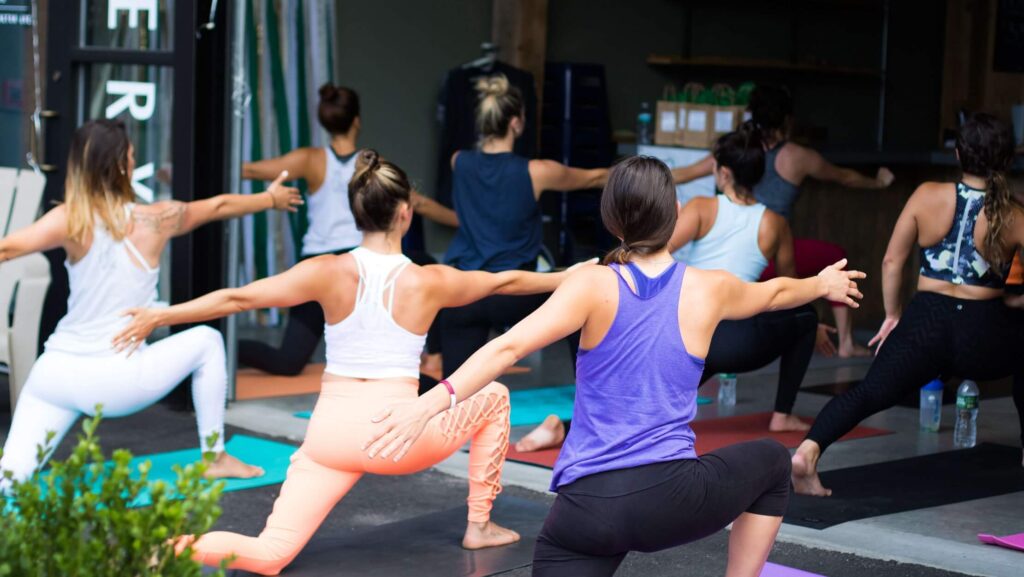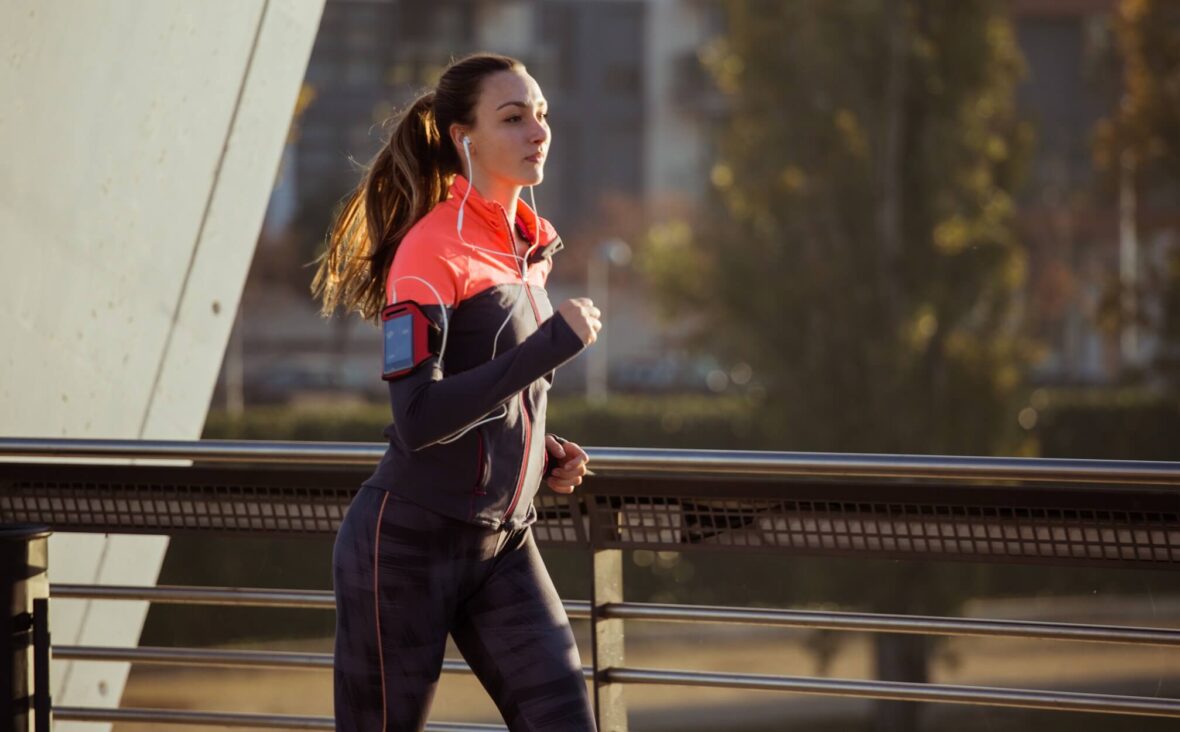Cardiovascular exercises are essential for the maintenance of the body system, which is essential for a healthy lifestyle. These exercises, such as running, walking, biking, and high-intensity interval training, can not only enhance endurance and stamina, but also promote heart health and other health benefits. By increasing the heart rate for extended periods of time, respiration increases to absorb more oxygen, and the body works to maintain a cool temperature.
This increases the strength of the heart and lungs, improves blood circulation, keeps joints mobile, and builds strength in the muscles, thus reducing the risk of heart disease and lowering resting blood pressure, among other health benefits. Improving cardiovascular endurance can make it easier to complete daily tasks, and can also reduce the risk of various diseases, including diabetes, heart disease and stroke.
This article review How to enhance benefits of cardiovascular exercises, and the various techniques to do get benefits.

What are the benefits of cardiovascular endurance?
If you want to get the most out of your health, it’s important to build up your cardiovascular endurance. Aerobic exercise is a type of exercise that builds up your heart rate and keeps it going for longer. This means your breathing gets faster and deeper, your blood vessels fill up with oxygen, and your body releases natural hormones that make you feel good.
Cardio helps the physical and mental benefits as follows:
- Build your strength and stamina – Cardio exercise can helps your heart and lungs stronger, and also support to gain bone and muscle fitness. Consequently, you’ll develop stamina over time.
- Helps to improve your mood – It’s been found that cardio exercise plays an important role in improving your mood and increasing your happiness, because it ups the production of the feel-good hormones called endorphins. It may also help you relieve tension, anxiety, relax and sleep better.
- Helps to manage your weight – Several scientific proof that 150 minutes of adequate intensity cardio per week can help you to maintain your body weight.
- Boost immune system – Aerobic exercise activate your immune system better, and you are less likely to catch viral illnesses such as colds and flu.
- Reduces the risks of heart disease – Several research have found that getting your heart rate up with steady cardio exercises may help inhibit cardiovascular ailment.
- Make stronger bones – It will also help to reduce your risk of developing osteoporosis.
- Reduces unhealthy behaviors – It can help you to live better which makes focus on health fitness somewhat than spent smoking, drinking alcohol, or gambling.
- Staying healthy longer – Regular exercising makes you stronger and also lower your risk of falls and injuries. Which ultimately improve the quality of your life as you age.
How to enhance benefits of cardiovascular exercises?
Exercising is great for everyone, but you have to pick the right type of workout for you. Talk to your doctor about what’s best for you, but here are some of the best cardio exercises that can help get your heart rate up quickly and help you build endurance.
1. Running:
If you want to burn calories, running is the way to go. Not only does it burn a ton of calories, but it also has a big effect on your energy levels, which have lots of health benefits. Plus, running can help reduce your risk of early death by up to 25-40%, and you can live up to three years longer than if you weren’t running. But make sure you get the right shoes for running – they’ll keep your feet strong and stable, so you won’t have any pain or injury.

2. Cycling:
If you’re looking for a way to burn calories but don’t want to run or walk, cycling is a great option. It’s low-impact and can be done either on the road or at home on a stationary bike. Plus, it’s known to have a lot of health benefits, like better heart health and a lower risk of heart attack and heart disease. Plus, cyclists are thought to have higher levels of HDL (good) cholesterol.
3. Walking:
Engaging in physical activity such as walking is an effective way to increase physical growth and is accessible to a wide range of individuals. Furthermore, it is cost-effective and low-risk for injury. To reap the most benefit from cardiovascular exercise, it is recommended to walk briskly to increase one’s heart rate. Additionally, brisk walking can be combined with shorter periods of slower or more moderate walking to build stamina. To ensure optimal performance, it is important to wear comfortable walking shoes.
Walking Lunges –
Gymnastics can help you get more out of your movements by increasing your flexibility and loosening up your hamstrings and hips. It can also help you stay more upright and balanced, which can help you burn more calories and keep your heart rate up. To get started, start by standing with your feet a bit apart and take a big step forward until your front knee is flat. Then, stand up and step the other leg forward, repeating the process until you can do a lunge.
4. Swimming:
Swimming is a great way to build strength and endurance in both your upper and lower body. It’s also a great way to reduce stress and build mental toughness. If you’re just starting out, why not take a few rounds on a kickboard and get your legs and abs in the mix? Swimming is also known to be one of the safest forms of cardio, even lower than running, so why not give it a try?
5. Lunge Jumps:
Lunge jumping combines jumps with regular lunges to increase strength and endurance in the lower body while also raising heart rate and intensity. Begin with a staggered stance with your right foot out and your left foot out. Bend your knees in a lunge until both knees are 90°. Stretch your shoulders down while bringing your core in and turning your arms back. Land gently on your balls and lower back into the lunge. Do this for as many reps as you can.
6. Hiking:
Hiking is an excellent exercise that requires the full use of the body. Not only does it improve cardiovascular fitness, but it also promotes emotional wellbeing. Mountain climbers use their entire body for this activity, including their legs, core muscles, shoulders, and cardiovascular system, with a mental toughness component. This exercise requires a high level of core strength and upper body endurance.
To begin, one should start in the push-up position with their hands and toes on the floor, their back flat, and their abs engaged. The right knee should be carried towards the chest, with the foot resting on the floor. After this, the left foot should be moved in, and the right foot should be moved back. This exercise should be repeated as often as safely as possible, as it will increase heart rate and strength, while also helping to build leg endurance and improve swiftness.

7. Jumping Jacks:
Jumping jacks are a classic full body workout exercise that can help to increase heart rate while working on the entire body. To begin, stand up and jump onto a step or platform with both feet. If you feel unsafe or uncomfortable, take out a jumping jack and carry it out on the floor. After you have jumped back onto the step, repeat the process and alternate between the step and the jack as needed.
This type of exercise requires no equipment and can be adjusted to suit different fitness levels. The step should be positioned at its lowest position at the start. If you experience any discomfort or pain, it is recommended to avoid this exercise.
8. Burpees:
Burpees are a great cardio workout for everyone. It’s a powerful move that works your whole body and gets your heart rate going in a short amount of time. You don’t need any equipment, just your own strength.
Here’s how to do it: Stand up straight, lift your arms over your head, hop up onto your toes, and stretch your hands down to the ground. Then jump on your feet back to back and land on your push-ups. Jump your feet forward and do a push-up and repeat as needed. It’s not recommended for people with joint, low back, or knee issues, but it can be done anywhere. If you’re looking to build strength and endurance, burpees are a great way to do it.
9. High Knees:
If you don’t have any exercise equipment, high knees are a great cardio exercise to help you build up your heart rate quickly. It also helps to tone your legs, core, and glutes. To get started, just stand up straight and lift your right leg up to your waist. Put it back down and do the same with your left leg. Keep increasing the speed so you’re bouncing in place and tapping each knee as you go. Do this at home with ease and you’ll get the same benefits as if you were running outside.
10. Squat Jumps:
This exercise is highly recommended for those looking to increase their cardiovascular endurance. It is a great way to add an extra layer of intensity to workouts, and is ideal for bodyweight exercises that target the lower body. To perform this exercise, start in a standing position, with your feet shoulder-width from each other. Bend your knees and lower into a squat, swinging your arms back and following with a quick upward swing and jumping as high as possible.
Soft knees should be used to protect your joints when landing, and if the effect is too strong, the move should be done without jumping. For those new to this exercise, it is recommended to take it slow and do small jumps, and to avoid this exercise if experiencing discomfort or pain.
11. Speed Skaters:
This workout is all about imitating how skaters move. It’s great for getting your heart rate up and working your body with lateral movements, which we don’t usually do. Plus, it’s good for your heart and targets your outer thighs, which is great for exercises like long jumps.
To get started, start with your feet together and jump as far to the right as you can. Put your right foot on the floor and cross your left leg behind you for balance. Then, jump to the left, taking a big step, and place your left foot on the floor. Keep going from side to side, trying to keep it low and wide instead of jumping straight up. Repeat as needed.

12. Jogging in Place:
Jogging is an effective way to increase one’s heart rate. Although it does not have the same impact as running outdoors, it does not involve any forward motion or resistance from the wind. By incorporating forward motion into the activity, it can help to increase heart rate. To begin, one should march while kicking their legs upwards and flailing their arms. As they become more comfortable, they should transition to a light jog with their feet kept close to the floor. As they jog, they should bring their heels up towards their glutes, and as they jog faster, they should drive their arms over their heads or lift their legs.
Some more approaches:
Jump Rope – Jumping rope is a basic exercise to speed up your heart rate. This form of cardio can be done just about anywhere, and pack your rope in suitcase, or purse, and whenever you have some spare time, do it for 150 minutes of exercise per week
Stairs – Climbing stairs is a best way exercise to get your heart rate up. You can do it anywhere in a park, or building.
Dancing – Dancing is also a great way to getting your cardio in, and can be done at home, or outside in a group.
Organized Sports – You can also have lots of fun and be healthy by joining for soccer, flag football, basketball, or whatever game suits your fancy. This will help you to increase your heart rate.
Group Exercise – You can enjoy aerobic exercise with a social component, join a group exercise class like aerobics, step, cardio circuits, Zumba, boxing, kickboxing. This can be either at local community centers, health clubs, or fitness studios.
Some Tips to improve your endurance:
These are few tips to consider while doing exercises:
#Avoid excess –
Doing regular exercise will provide much benefit, and avoid too much stress on your joints and muscles.
#Start with simple –
If you are a beginner to exercise, start with as little as 15 minutes of exercise. Once you are comfortable, than you can increase your exercise timings slowly up to 30 minutes per day at least 3 days per week. You should measure your improvement in your cardiovascular endurance in eight to 12 weeks.
#Enjoy your exercise –
You can select any exercise, which you enjoy most, and rotate through many different ones Aerobic exercise. This will help your large muscles and makes your heart and lungs work harder.
#Gradually work up –
You should aim to push yourself somewhat more than your normal movement level. Increase your exercise speed no more than 10% to 20% each week, and increase further gradually.

#Warm up, cool down, and stretch –
Always start by working at a low level for few minutes to warm up. Then gradually figure up how hard you work until you reach your limit. After you finish working at full intensity, again slow down for few minutes before you stop.
#Add High-intensity Training –
After certain improvement, you can also add some high-intensity interval training (or HIIT) to your routine. Because HIIT is made up of alternating intervals of hard effort and easy recovery, and also highly effective way to boost your cardio capabilities. But it should limit workouts to twice per week max.
#Monitor Your Improvement –
You should check your progress of improvement at a particular effort level.
How long it takes to improve?
There are only a few things that influence your endurance improvement. These include your workout routine, how well you feed your body, and how much time you spend resting and recuperating. It’s safe to start seeing your cardiovascular endurance improve after about three to four weeks of training. For beginners, their endurance improvement results may be more dramatic than for those who have more miles under their belt.
Conclusion:
If you want to stay healthy and be happy, doing cardio exercises is key. It’s good for your mental and physical health, and it’s an important part of living a long, healthy life. You don’t have to stick to a routine – you can get creative and find ways to increase your heart rate. You can do it in your own home or outside, and it’s easier and more convenient that way.
The key to any fitness routine is to find ways to enjoy it – don’t be afraid to try new things and find ways to enjoy breaking a sweat. Cardiovascular endurance is how well your body can do exercise, and it affects your heart and lungs. It can take some time to build up, but you need to do it regularly to keep your body healthy.
FAQ
How to check cardiovascular stamina?
Developing cardiovascular endurance is relatively straightforward. You’ll need to do some form of aerobic exercise (trainers usually use treadmill walking). Wearing a heart rate monitor, gradually increase the intensity until you’re doing hard enough to not be able to speak comfortably. This indicates that you’ve reached your upper limit of cardiovascular endurance. The talk test is a test to measure your cardiovascular endurance. After the test, your health care professional or doctor will discuss the results with you.
What are effects of aerobic exercise?
Lots of studies show that aerobic exercise is a great way to get fit and increase your heart rate. You should do it for at least 30 minutes a day, three to seven days a week. Doing aerobic exercises helps your whole body work better, which can benefit your heart, lungs, muscles, nerves, tendons, and bones. Plus, it can help your body use fat more efficiently.
DISCLAIMER:
This article does not address specific conditions, and is only meant to offer general information. It should not be used as a substitute for expert counsel, or support or as the basis for any kind of decision. You wholly bear all risk and responsibility for actions taken in belief on the information included in this article.
Reference Used:
https://www.webmd.com/fitness-exercise/what-is-cardiovascular-endurance
https://www.healthline.com/health/fitness-exercise/cardio-exercises-list
https://www.nike.com/a/cardiovascular-endurance-exercises





